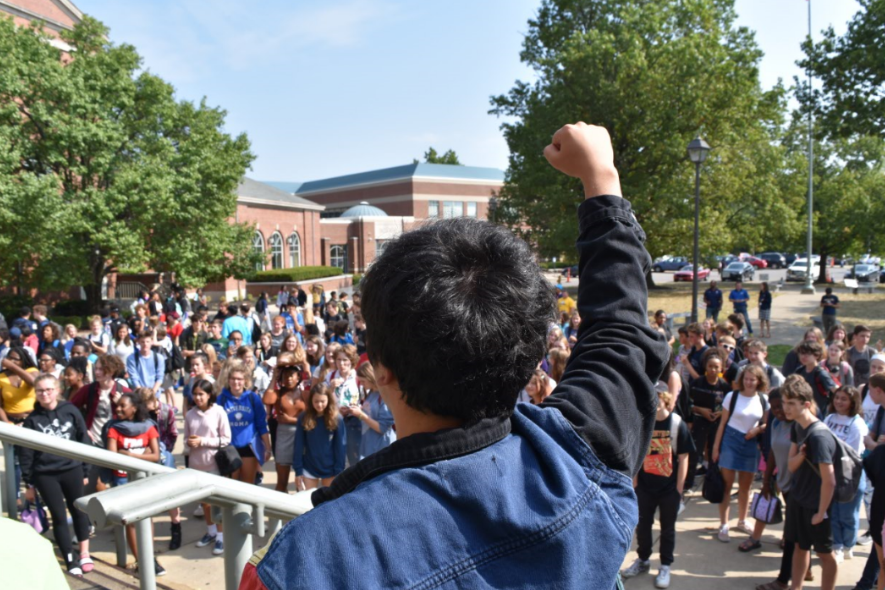The Peer Podium: Walkouts productively generate awareness, get students involved
“No more coal! No more oil! Keep your carbon in the soil!” WHHS students joined the national walkout to bring awareness to climate change on Friday, Sept. 20.
Students left their seats, walked out to Blair Circle, and joined their peers at WHHS to protest climate justice. The walkout began with a simple chant: “Planet not profit!” This was one of many chants roared by WHHS students and millions of others around the world protesting climate injustice. With a desire for action, students fled from their seats and took to the streets to fight for what they believe in.
To determine whether a walkout is effective, it is first important to determine its goals. The goals of any walkout are as follows: to raise awareness for an issue, to involve students who can often not be too involved and to get people to join a movement. WHHS’s student activists clearly achieved all three of these goals in their walkout. Students raised awareness for climate justice. The walkout involved a diverse array of students who had not been involved previously. And many students made it to City Hall.
While this walkout met its goals and was therefore an effective protest, there are those who argue that it is still ineffective because youth protestors cannot vote. However, those who say that fail to realize that the power of young people has always been their ability to change minds. When over four million people, many of whom are young people, strike across the globe for a cause, it becomes irrational to argue that it will have no impact.
Another common argument about why school walkouts are ineffective is that most students go unpunished and the walkouts are administration-approved. However, the claim that school administrators approve walkouts and excuse students from class is usually untrue. While it is difficult for administrators to punish every student who walks out, especially for bigger schools, the organizers of most youth walkouts nearly always receive repercussions, usually in the form of a detention. All students accept a consequence when they walk out: giving up part of their schooling. They do this in order to raise awareness and take action for an issue that matters to them. This is true civil disobedience and is what adds power and effectiveness to a walkout.
Finally, there are going to be those who argue that walkouts do not immediately result in a policy change and are therefore ineffective. These are the people who fail to recognize what a walkout really is: a first step. Most organizers never say that a walkout will create immediate policy change, but most will agree that walkouts inspire people to follow through with the next steps that are not as sexy as a walkout. It inspires people to reach out to their elected officials, to make a difference in their school and to do the less exciting aspects of activism, including canvassing, meeting with politicians, or volunteering.
Walkouts are effective because they give students an opportunity to fight for their future. Walkouts are effective because they are a first step, not the final step. Walkouts are effective because they inspire people to fight for what they believe in.
“No more coal! No more oil! Keep your carbon in the soil!” WHHS students joined the national walkout to bring awareness to climate change on Friday, Sept. 20.To those who walked out, you need to keep fighting for change. You need to contact your representatives (text RESIST to 50409). After you have walked out, you need to keep advocating for climate justice, especially for poorer black and brown communities. For those in Flint, Michigan, for the indigenous people near the Dakota Access Pipeline and for so many others who are already feeling the effects of the climate crisis, you need to take a stand.
All views shared in the Opinions section of The Chatterbox belong to their respective authors, and may not represent the views of the publication as a whole
Your donation will support the student journalists of Walnut Hills High School. Your contribution will allow us to purchase equipment, cover our annual website hosting, printing costs and offset competition and conferences fees for students.









